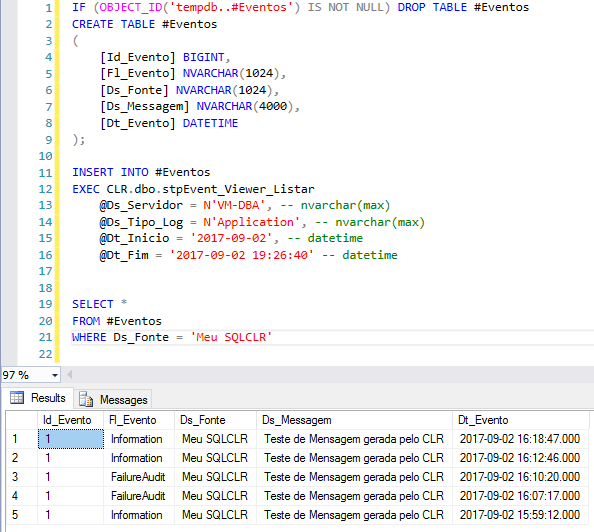

One of the minimally logged operations(under Bulk-logged recovery model) is "SELECT.INTO". In other words, one cannot restore a T-log backup to a certain point-in-time if the backup file contains any bulk-logged transactions.įirst up, what exactly is logged when we say "limited information"? the answer is, only the page allocations are logged in the T-log without any reference to the actual data those pages contain, hence maintaining the less T-log size.

If everything is OK, the task will be like this and a file named ssis.There have been articles online explaining the minimal logging behavior of SQL Server under bulk-logged recovery model, nonetheless, it still seems to be debatable and not well understood. Right click the tasks and select Execute task: In arguments specify the bcp arguments to export data from a SQL Server table to a text file named: ssis.bcpĪ out c:\sql\ssis.bcp -c -T -S WIN-355CHQ0E524 In executable, specify the path of the bcp file:Ĭ:\Program Files\Microsoft SQL Server\Client SDK\ODBC\130\Tools\Binn\bcp.exe In projects select Integration Services Project:ĭrag and drop the Execute Process Task to the design pane: Another case is when you are adept at the command line and you already have some batch files ready and you just want to invoke them. For example, if you already have some command lines in bcp and you just want to invoke them. However, there are some scenarios where you can invoke bcp in SSIS. You can use the Data Flow task to create customized tasks or maybe use the Bulk Insert task to import data to SQL Server. It is not a common practice to run bcp on SSIS because SSIS contains tasks to import and export data. PowerShell will import the files in the powershell.txt file: Use the Invoke-Expression to call the variable with the bcp commands: Invoke-Expression $psCommand Store the bcp command line with the parameters in another parameter: $psCommand = “bcp $($db).$($schema).$($table) out $path -T -c” In PowerShell create variables to store the database name, schema, table and output path: $db = “adventureworks”$schema = “person”$table = “person”$path = “C:\sql\powershell.txt”

#SQL BULK COPY LOG WINDOWS#
You can also run bcp using PowerShell, which is included with Windows and it can be also installed on Linux and Mac. PowerShell is a powerful tool to automate tasks using scripts and the command line. Send data from sql to file using a queryīcp "select top 100 * from 3" queryout "c:\bcps\query.txt" -T -c create table peopel4 in SQL2 database to receive data from file the following command will import data FROM flat file sql toīcp 4 in "c:\bcps\people3.txt" -T -c the following command will export data FROM sql to flat fileīcp 3 out "c:\bcps\people3.txt" -T -c

Using bcp to EXPORT data from SQL table to flat file using OUTīcp out "to the path" -T (trusted credentials) -c (char datatype) Syntax and switches bcp schema.Įxamples 1. You can open the file and check the data: If everything is OK, the file will be created: You will receive the number of rows copied, the network packet size and the speed to copy the rows per second. The bcp command provides switches that you use to specify the data type of the data file and other information User must be aware of the data types and lengths of the table columns You can use a batch file to set up a schedule using BCP The bcp utility is accessed by the bcp command or by using a batch file The bcp utility can import data from a data file to a SQL Server table.The bcp utility can export data from a SQL Server table to a data file.SQL Server Bulk Copy Program (BCP) utility (Bcp.exe) is a command-line tool that uses the Bulk Copy Program (BCP) to perform the following tasks:


 0 kommentar(er)
0 kommentar(er)
